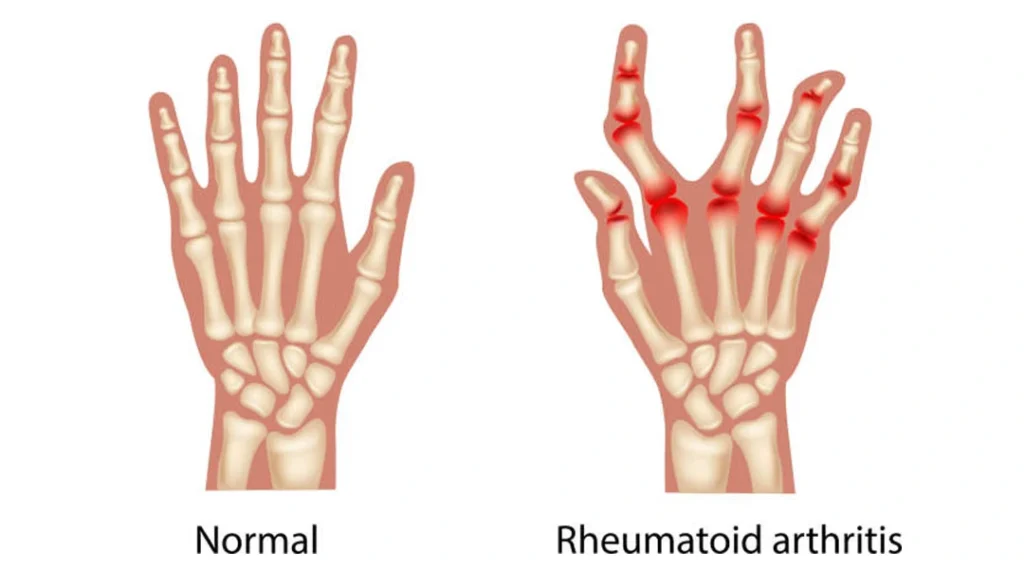Rheumatoid arthritis (RA) is a chronic inflammatory disorder that primarily affects joints, but it can also cause a wide array of systemic complications. Understanding the main cause of rheumatoid arthritis is critical for developing effective treatments and management strategies. In this comprehensive article, we delve into the main causes of rheumatoid arthritis, exploring genetic, environmental, and immune system factors.
Genetic Factors
Genetic predisposition plays a significant role in the development of rheumatoid arthritis. Studies have shown that individuals with a family history of RA are more likely to develop the condition themselves. The HLA-DRB1 gene is one of the most well-known genetic markers associated with RA. Variations in this gene can increase the risk of developing the disease by influencing how the immune system distinguishes between self and non-self cells.
Twin studies also support the genetic link, indicating that identical twins are more likely to develop RA compared to non-identical twins. However, genetics alone do not account for all cases of RA, suggesting that other factors contribute to the disease’s onset.
Environmental Triggers
Environmental factors can trigger the onset of rheumatoid arthritis in genetically susceptible individuals. Infections, such as those caused by certain viruses and bacteria, have been implicated in triggering the immune response that leads to RA. Although no specific pathogen has been definitively identified as the cause, researchers continue to investigate the potential link between infections and RA.
Smoking is one of the most well-established environmental risk factors for RA. It has been shown to increase the risk of developing the disease, especially in individuals with a genetic predisposition. Smoking not only contributes to the onset of RA but also exacerbates the severity of the disease and reduces the effectiveness of treatments.
Occupational exposures to certain substances, such as silica dust, have also been linked to an increased risk of developing RA. Workers in mining, construction, and agriculture industries may be at higher risk due to their exposure to these harmful substances.
Immune System Dysfunction
Rheumatoid arthritis is classified as an autoimmune disease, meaning the immune system mistakenly attacks the body’s tissues. In RA, the immune system targets the synovium, the lining of the membranes that surround the joints. This leads to inflammation, pain, and eventually joint damage.
The exact mechanism that triggers this immune response is not fully understood, but it is believed to involve a combination of genetic and environmental factors. Cytokines, which are proteins involved in cell signaling, play a crucial role in the inflammatory process. In RA, an imbalance of pro-inflammatory and anti-inflammatory cytokines leads to chronic inflammation and joint damage.
Autoantibodies are another hallmark of RA. The presence of antibodies such as rheumatoid factor (RF) and anti-citrullinated protein antibodies (ACPAs) can be detected in the blood of many RA patients. These autoantibodies contribute to the immune system’s attack on the synovium and are used as diagnostic markers for the disease.

Hormonal Influences
Hormonal factors may also contribute to the development of rheumatoid arthritis. The disease is more common in women than men, suggesting that hormonal differences play a role. Some studies have indicated that fluctuations in hormones such as estrogen may influence the immune system and increase the risk of developing RA.
Pregnancy and menopause can also affect the course of the disease. Many women with RA experience a temporary improvement in symptoms during pregnancy, followed by a flare-up after childbirth. This suggests that hormonal changes can modulate the disease’s activity.
Lifestyle Factors
Certain lifestyle factors can influence the risk of developing rheumatoid arthritis and the progression of the disease. Diet plays a role in inflammation, and some studies suggest that a diet rich in omega-3 fatty acids, antioxidants, and anti-inflammatory foods may help reduce the risk of RA and its symptoms.
Physical activity is also important for managing RA. Regular exercise helps maintain joint flexibility, muscle strength, and overall health. However, individuals with RA must balance activity with rest to avoid overexertion and joint damage.
Stress is another factor that can influence RA. Chronic stress can weaken the immune system and exacerbate inflammation, potentially triggering or worsening RA symptoms. Stress management techniques such as mindfulness, meditation, and relaxation exercises can be beneficial for individuals with RA.
Conclusion.
Rheumatoid arthritis is a complex disease with multiple contributing factors. Genetics, environmental triggers, immune system dysfunction, hormonal influences, and lifestyle factors all play a role in its development and progression. Understanding these factors is essential for developing effective prevention and treatment strategies.
By addressing the underlying causes and adopting a holistic approach to management, individuals with rheumatoid arthritis can improve their quality of life and reduce the impact of the disease.



